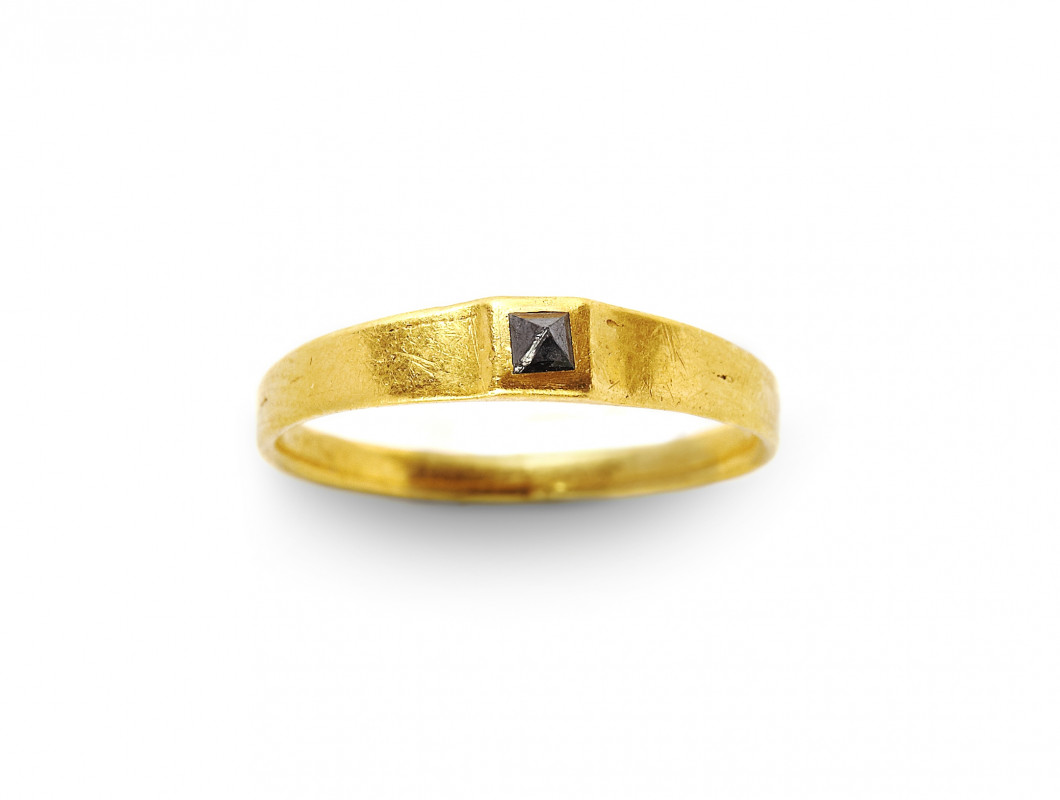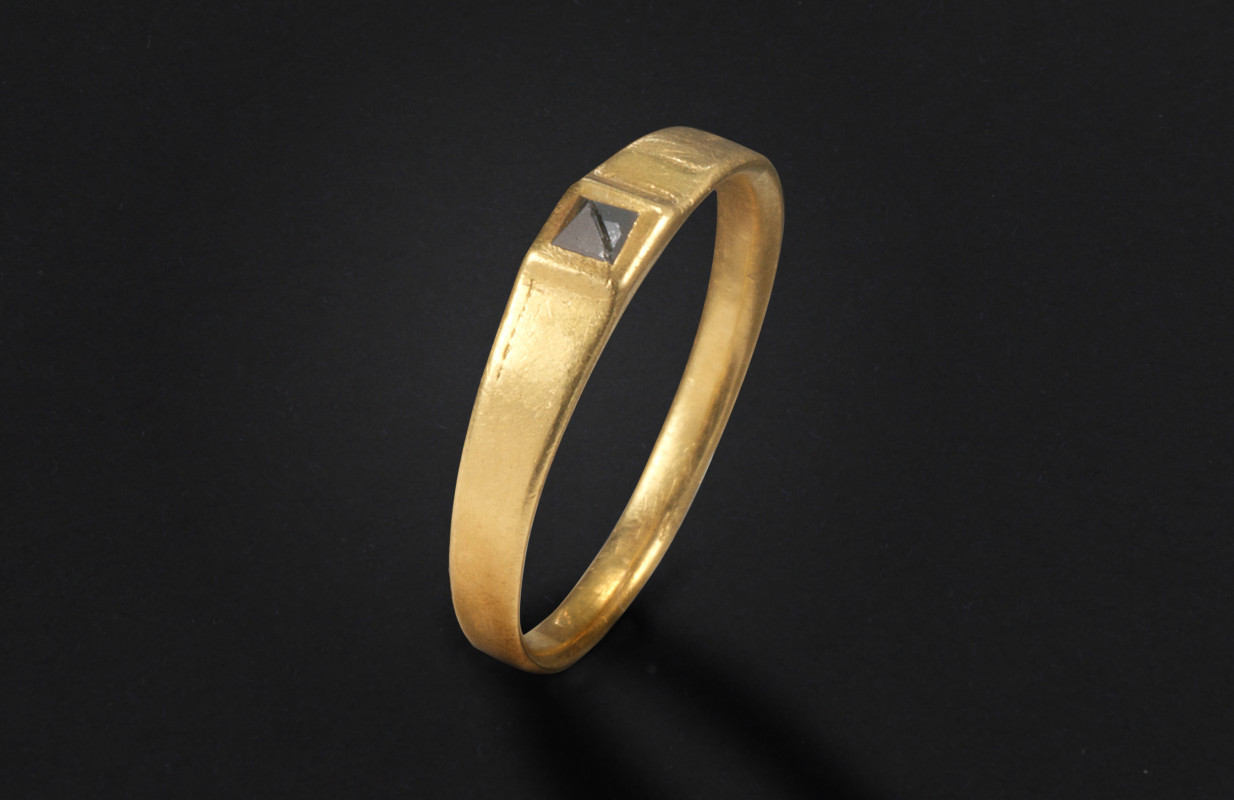Ring with a pointed diamond
1450 - 1530
A pin-point diamond or octahedron adorns this yellow gold ring. The diamond is set in a closed, square setting. To keep the octahedron in place, the diamond setter had to hide more than half of the diamond from view. That partly explains the dark colour. The diamond also appears black because a black substance in the setting absorbs all the light from the diamond. We have to guess about the exact matter. According to the 16th century Italian goldsmith Benvenuto Cellini (1500-1571) it could be a black foil, tar or black silk. What we do know is that the material used has not stood the test of time very well. Rings like this are quite rare and in the known examples the diamonds are often small. Larger octahedrons were regularly recut into a more modern cut, a brilliant for example. This ring is from the collection of N. Peerdeman and is said to have been excavated in Nieuwlande on the Oosterschelde. During the Middle Ages, flourishing trading centres arose in this region. Heavy floods and the Eighty Years' War put an end to that prosperity. Since 1986, man has been reclaiming land from the sea by building a dam. Archaeological finds in this 'new' land bear witness to the former prosperity of this region. This ring is one of them.
Notice: Do you see a mistake? Or do you have extra information about this object? Please let us know!



